Audi Q5 vs Mazda CX-60 – Differences & prices compared
Everyday use, family trips or long-distance drives – here’s where the differences show.
Discover whether Audi Q5 or Mazda CX-60 fits your lifestyle better.
The Battle of the SUVs: Audi Q5 vs. Mazda CX-60
The SUV market has been witnessing exponential growth, driven by consumer demand for versatile vehicles that can handle both urban and rugged terrains. Two contenders that have emerged as strong options in the mid-size SUV category are the Audi Q5 and the Mazda CX-60. Both vehicles come equipped with cutting-edge technology, but which one truly stands out? Let's delve into the specifics to find out.
Engine and Performance
The Audi Q5 comes with an array of engine options, including diesel MHEV, petrol MHEV, and plug-in hybrid. Power ranges from 163 HP to an impressive 367 HP, offering speeds of up to 250 km/h. Moreover, the Q5’s acceleration is noteworthy, with the quickest model sprinting from 0 to 100 km/h in just 4.5 seconds. This SUV is available with all-wheel and front-wheel drive options, providing flexibility in drivetrain preference.
On the other hand, the Mazda CX-60 presents a compelling argument with its plug-in hybrid and diesel MHEV engines. Delivering a maximum of 327 HP, the CX-60 can accelerate from 0 to 100 km/h in an impressive 5.8 seconds. All-wheel and rear-wheel drive options cater to different driving styles, and its top speed reaches 219 km/h.
Fuel Efficiency and Environmental Impact
When it comes to fuel efficiency, both vehicles make significant strides. The Audi Q5's consumption rates range from 1.5 to 8.4 L/100km depending on the model, while the CX-60 is slightly more efficient with consumption rates between 1.4 and 5.4 L/100km. In terms of electric range, the CX-60 boasts a 64 km range, slightly edging out Audi's 62 km, which might appeal to eco-conscious drivers.
Regarding emissions, the Mazda CX-60 takes the lead with CO2 emissions starting as low as 31 g/km, whereas the Audi Q5 ranges from 154 to 213 g/km.
Interior and Comfort
Both the Audi Q5 and Mazda CX-60 provide seating for five passengers, each offering a spacious interior designed for comfort and practicality. The trunk capacity is another consideration, with the Q5 offering between 455 and 520 liters, while the CX-60 offers a more generous 570 liters of cargo space.
Luxury and comfort features abound in both models, including state-of-the-art infotainment systems and advanced safety technologies, ensuring a premium driving experience.
Design and Dimensions
Visually, both SUVs exude elegance and strength. The Audi Q5 is slightly shorter at an approximate length of 4682 to 4717 mm, while the Mazda CX-60 stretches to 4745 mm. However, the width and height between both vehicles are comparable, offering a stable road presence.
Final Verdict
Choosing between the Audi Q5 and the Mazda CX-60 boils down to personal preference and priorities. If you seek high performance with a range of engine options and a luxurious driving experience, the Audi Q5 might be your vehicle of choice. Meanwhile, the Mazda CX-60 provides a stronger case for eco-friendliness and cargo space efficiency.
Ultimately, both SUVs hold their own in the competitive market, offering strong value for their respective brands. Potential buyers will not be disappointed with either choice, as both serve as outstanding exemplars of modern automotive engineering.
Here’s where it gets real: The technical differences in detail
Costs and Efficiency: When it comes to price and running costs, the biggest differences usually appear. This is often where you see which car fits your budget better in the long run.
Mazda CX-60 has a hardly perceptible advantage in terms of price – it starts at 41900 £, while the Audi Q5 costs 44800 £. That’s a price difference of around 2923 £.
Fuel consumption also shows a difference: the Mazda CX-60 manages with 1.40 L and is therefore clearly more efficient than the Audi Q5 with 2.50 L. The difference is about 1.10 L per 100 km.
As for range, the Audi Q5 performs noticeable better – achieving up to 100 km, about 36 km more than the Mazda CX-60.
Engine and Performance: Power, torque and acceleration are the classic benchmarks for car enthusiasts – and here, some clear differences start to show.
When it comes to engine power, the Audi Q5 has a slightly edge – offering 367 HP compared to 327 HP. That’s roughly 40 HP more horsepower.
In acceleration from 0 to 100 km/h, the Audi Q5 is evident quicker – completing the sprint in 4.50 s, while the Mazda CX-60 takes 5.80 s. That’s about 1.30 s faster.
In terms of top speed, the Audi Q5 performs somewhat better – reaching 250 km/h, while the Mazda CX-60 tops out at 219 km/h. The difference is around 31 km/h.
Both models offer the same torque – 550 Nm.
Space and Everyday Use: Whether family car or daily driver – which one offers more room, flexibility and comfort?
Both vehicles offer seating for 5 people.
In curb weight, the Mazda CX-60 is minimal lighter – 1890 kg compared to 1910 kg. The difference is around 20 kg.
In terms of boot space, the Mazda CX-60 offers barely noticeable more room – 570 L compared to 520 L. That’s a difference of about 50 L.
In maximum load capacity, the Mazda CX-60 performs a bit better – up to 1726 L, which is about 253 L more than the Audi Q5.
When it comes to payload, Mazda CX-60 hardly perceptible takes the win – 612 kg compared to 565 kg. That’s a difference of about 47 kg.
All in all, the Mazda CX-60 shows itself to be outperforms in nearly all aspects and secures the title of DriveDuel Champion.
It impresses with the more balanced overall package and proves to be the more versatile companion for everyday use.
Audi Q5
The Audi Q5 exudes a perfect blend of luxury and performance, making it a standout in the competitive SUV market. Its elegant design is complemented by a spacious and meticulously crafted interior, providing both comfort and functionality for drivers and passengers alike. With advanced technology and a range of powerful engines, the Q5 effortlessly combines driving pleasure with practicality for everyday use.
details @ audi-mediacenter.com
@ audi-mediacenter.com
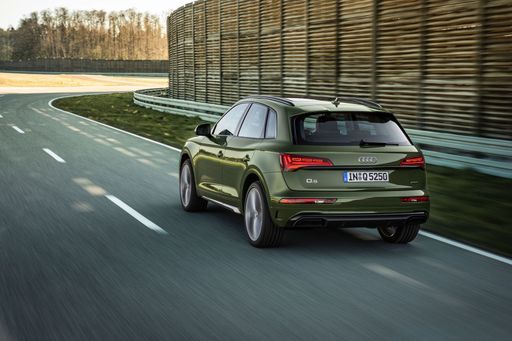 @ audi-mediacenter.com
@ audi-mediacenter.com
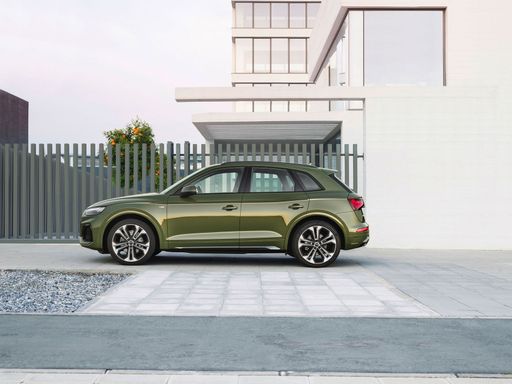 @ audi-mediacenter.com
@ audi-mediacenter.com
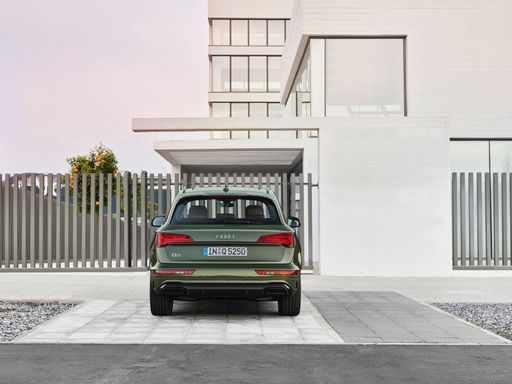 @ audi-mediacenter.com
@ audi-mediacenter.com
 @ audi-mediacenter.com
@ audi-mediacenter.com
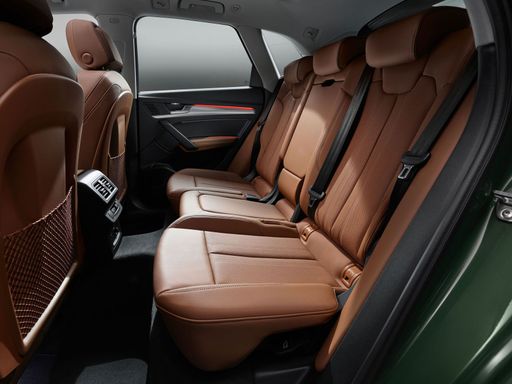 @ audi-mediacenter.com
@ audi-mediacenter.com
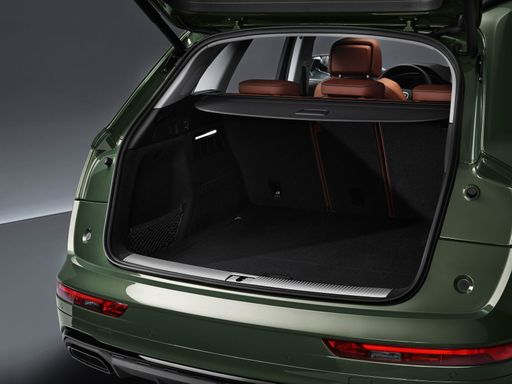 @ audi-mediacenter.com
@ audi-mediacenter.com
Mazda CX-60
The Mazda CX-60 exudes a sense of elegance and sophistication with its sleek design and refined styling. Inside, the cabin offers a harmonious blend of comfort and advanced technology, ensuring an enjoyable driving experience. On the road, the CX-60 delivers impressive performance and handling, making it a standout choice for those who appreciate driving dynamics.
details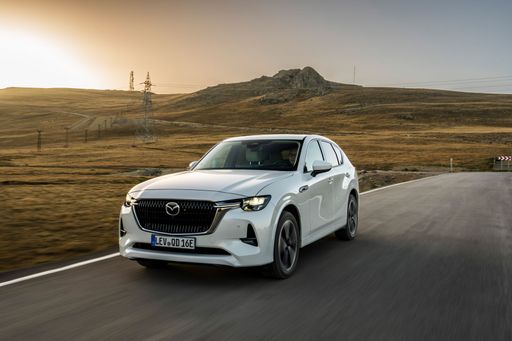 @ de.mazda-press.com
@ de.mazda-press.com
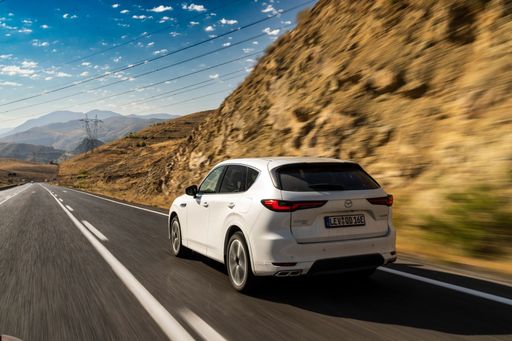 @ de.mazda-press.com
@ de.mazda-press.com
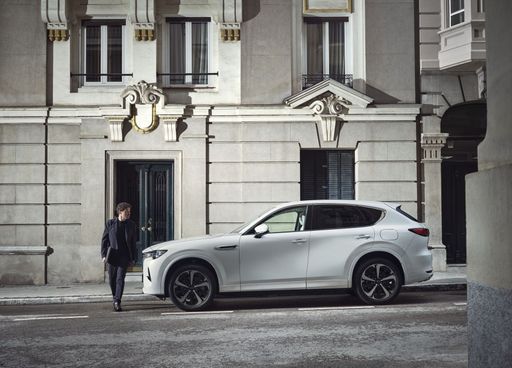 @ de.mazda-press.com
@ de.mazda-press.com
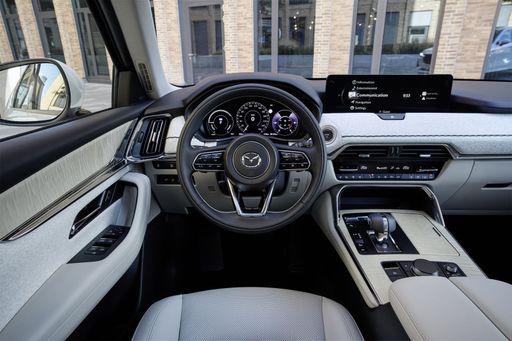 @ de.mazda-press.com
@ de.mazda-press.com

|

|
|
|
|
Costs and Consumption |
|
|---|---|
|
Price
44800 - 78900 £
|
Price
41900 - 56800 £
|
|
Consumption L/100km
2.5 - 8.3 L
|
Consumption L/100km
1.4 - 5.4 L
|
|
Consumption kWh/100km
-
|
Consumption kWh/100km
-
|
|
Electric Range
92 - 100 km
|
Electric Range
64 km
|
|
Battery Capacity
20.70 kWh
|
Battery Capacity
-
|
|
co2
56 - 189 g/km
|
co2
31 - 139 g/km
|
|
Fuel tank capacity
55 - 65 L
|
Fuel tank capacity
50 - 58 L
|
Dimensions and Body |
|
|---|---|
|
Body Type
SUV
|
Body Type
SUV
|
|
Seats
5
|
Seats
5
|
|
Doors
5
|
Doors
5
|
|
Curb weight
1910 - 2245 kg
|
Curb weight
1890 - 2055 kg
|
|
Trunk capacity
433 - 520 L
|
Trunk capacity
570 L
|
|
Length
4717 mm
|
Length
4745 mm
|
|
Width
1900 mm
|
Width
1890 mm
|
|
Height
1647 - 1656 mm
|
Height
1680 - 1688 mm
|
|
Max trunk capacity
1300 - 1473 L
|
Max trunk capacity
1726 L
|
|
Payload
490 - 565 kg
|
Payload
581 - 612 kg
|
Engine and Performance |
|
|---|---|
|
Engine Type
Plugin Hybrid, Petrol MHEV, Diesel MHEV
|
Engine Type
Plugin Hybrid, Diesel MHEV
|
|
Transmission
Automatic
|
Transmission
Automatic
|
|
Transmission Detail
Dual-Clutch Automatic
|
Transmission Detail
Automatic Gearbox
|
|
Drive Type
All-Wheel Drive, Front-Wheel Drive
|
Drive Type
All-Wheel Drive, Rear-Wheel Drive
|
|
Power HP
204 - 367 HP
|
Power HP
200 - 327 HP
|
|
Acceleration 0-100km/h
4.5 - 8.6 s
|
Acceleration 0-100km/h
5.8 - 8.4 s
|
|
Max Speed
226 - 250 km/h
|
Max Speed
200 - 219 km/h
|
|
Torque
340 - 550 Nm
|
Torque
450 - 550 Nm
|
|
Number of Cylinders
4 - 6
|
Number of Cylinders
4 - 6
|
|
Power kW
150 - 270 kW
|
Power kW
147 - 241 kW
|
|
Engine capacity
1968 - 2995 cm3
|
Engine capacity
2488 - 3283 cm3
|
General |
|
|---|---|
|
Model Year
2025
|
Model Year
2024
|
|
CO2 Efficiency Class
B, E, F, G
|
CO2 Efficiency Class
B, D, E
|
|
Brand
Audi
|
Brand
Mazda
|
What drivetrain options does the Audi Q5 have?
The Audi Q5 is available as All-Wheel Drive or Front-Wheel Drive.
The prices and data displayed are estimates based on German list prices and may vary by country. This information is not legally binding.
